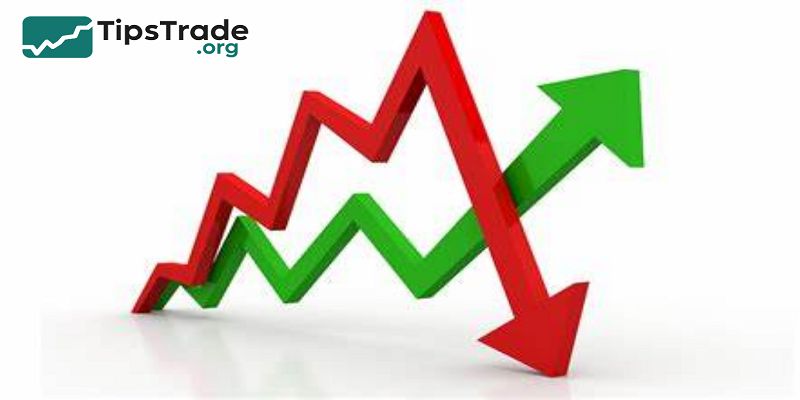Stock price basics form the foundation for understanding how stocks are valued and traded in financial markets. At its core, stock prices are determined by the forces of supply and demand, reflecting what investors collectively think a company is worth.. For a more detailed introduction, you can also visit tipstrade.org where this topic is thoroughly explained with real data and expert insights. This will help you build a solid understanding of stock price basics and their relevance to investing and trading.
Stock Price Basics?
- A stock price represents how much investors are willing to pay for a single share of a company at a specific moment.
- It’s the market value of ownership in that business, determined by supply and demand in the stock market.
- When more people want to buy a stock than sell it, the price goes up — and vice versa.
- According to Investopedia, a stock price reflects the market’s perception of a company’s future profitability and overall financial health.
- It’s not necessarily the same as the company’s true value, but rather what investors believe it’s worth right now.
- For example, when Apple launches a new product, investor excitement often increases demand for its shares, pushing the price higher.
- Conversely, negative news — like a lawsuit or missed earnings target — can quickly bring prices down.
In short: Stock prices are like a real-time “vote” of investor confidence, constantly shifting based on market conditions, company performance, and global events.
>>See more:
- What is the NYSE? Understanding the New York Stock Exchange
- Market Cap Stocks: What They Are and Why They Matter for Investors
- What is Stock Liquidity? Why It’s Important for Investors
- Primary vs Secondary Market: Key Differences Explained
How Stock Prices Are Determined

- Stock prices are determined by one key principle: supply and demand.
- When more investors want to buy a stock (demand) than sell it (supply), the price rises. If the opposite happens, the price falls.
- Behind this simple rule lies a complex system of market forces.
- Companies release financial statements, analysts publish earnings forecasts, and traders react instantly to economic data or news.
- Platforms like the NASDAQ and NYSE use electronic systems to match buy and sell orders, setting prices in milliseconds.
- According to the U.S. Securities and Exchange Commission (SEC.gov), company fundamentals — such as profits, debt levels, and cash flow — heavily influence price trends.
- But short-term fluctuations often result from investor sentiment or speculation rather than actual performance.
For example, Tesla’s stock frequently jumps or drops after CEO Elon Musk tweets or gives interviews, even if the company’s fundamentals remain unchanged.
Bottom line: Stock prices move because people and institutions continuously reassess what they think a stock is worth.
Factors That Influence Stock Prices
Stock prices don’t change randomly. They respond to a mix of internal, external, and psychological factors:
Internal Factors
- Earnings reports: Strong quarterly profits usually boost stock prices.
- Dividends: Companies offering regular dividends attract investors seeking income.
- Leadership decisions: Changes in management or strategic direction can impact confidence.
External Factors
- Economic indicators: Inflation, GDP growth, and interest rates affect investor optimism.
- Government policy: Tax changes or monetary tightening can influence entire sectors.
- Geopolitical events: Wars, pandemics, or trade tensions often create market volatility.
Market Sentiment
- Even rumors or social media trends can move prices.
- The GameStop short squeeze (2021) showed how retail investors can push prices far beyond a stock’s intrinsic value.
Example: After Federal Reserve announcements, prices often fluctuate as traders adjust expectations for borrowing costs and growth.
How to Read and Interpret Stock Prices

Learning to read stock prices helps you make informed decisions instead of emotional ones.
When you look at a stock quote on Yahoo Finance or Google Finance, you’ll see several terms:
- Ticker symbol: The stock’s unique abbreviation (e.g., AAPL for Apple).
- Last price: The most recent trade price.
- Bid/Ask: The highest price a buyer offers (bid) and the lowest price a seller accepts (ask).
- Volume: How many shares traded that day.
- Market cap: Total value of all outstanding shares (Price × Shares).
Investors also analyze metrics like:
- P/E ratio (Price-to-Earnings): Indicates how expensive a stock is relative to earnings.
- EPS (Earnings Per Share): A company’s profit per share.
According to Morningstar, comparing these numbers to industry peers can reveal whether a stock is undervalued or overvalued.
Tip: Always check multiple data points before making decisions — price alone doesn’t tell the whole story.
Why Stock Prices Fluctuate Daily

Stock prices move constantly because markets react instantly to new information. Every second, millions of investors buy and sell shares based on changing expectations.
Common short-term triggers
- Earnings announcements: Companies exceeding expectations see price surges.
- Breaking news: Mergers, scandals, or government reports can cause volatility.
- Interest rate changes: When the Federal Reserve raises rates, borrowing becomes expensive, often reducing investor appetite for stocks.
According to Bloomberg, over 70% of daily price swings are driven by short-term sentiment, not long-term fundamentals.
Algorithms and institutional traders amplify these movements by executing thousands of trades per second.
Example: Amazon’s stock often fluctuates sharply during earnings season but stabilizes afterward as the market digests the data.
In essence: Stock prices fluctuate daily because markets are a reflection of collective expectations — constantly updated in real time.
Short-Term vs. Long-Term Stock Price Movements
Not all stock movements are created equal. Understanding the difference between short-term and long-term trends is crucial for smart investing.
- Short-term fluctuations often result from hype, rumors, or temporary events. Traders may profit from quick moves but face higher risk.
- Long-term trends reflect the company’s financial strength, innovation, and ability to grow profits.
For instance, Apple and Microsoft stocks may dip temporarily after product delays but recover as their business fundamentals remain solid.
Meanwhile, companies with weak earnings or excessive debt may decline over time.
Research from Morningstar (2023) shows that investors who held diversified portfolios for 5+ years had higher success rates than short-term traders.
Lesson: Focus on the bigger picture. Ignore daily noise and base decisions on company performance, not social media buzz.
How Investors Use Stock Prices

Investors use stock prices as a compass for making buying, selling, and holding decisions. But price alone isn’t enough — it must be analyzed within context.
Fundamental Analysis
- This method examines financial data like earnings, revenue, and debt to determine a stock’s intrinsic value.
- If a stock trades below that value, it might be considered undervalued.
Technical Analysis
- Traders look at price charts, moving averages, and patterns to predict short-term movements.
- Tools like RSI (Relative Strength Index) or MACD help identify momentum shifts.
Behavioral Analysis
- Understanding investor psychology can explain irrational market reactions.
- For instance, “fear of missing out” (FOMO) can drive prices higher than justified.
- According to CNBC, successful investors like Warren Buffett rely more on fundamentals than short-term price patterns.
Key idea: Stock prices are indicators — not instructions. Use them wisely alongside other metrics.
Stock Price vs. Company Value
- A company’s stock price and its actual value aren’t the same thing.
- The true worth of a business is measured by its market capitalization — the stock price multiplied by the number of outstanding shares.
- For example, if a company has 10 million shares priced at $50, its market cap is $500 million.
- However, that doesn’t necessarily reflect its intrinsic value, which depends on future earnings potential and growth.
- Analysts use valuation models like Discounted Cash Flow (DCF) to estimate a company’s real worth.
- When a stock’s price exceeds its intrinsic value, it’s said to be overvalued; when it’s below, it’s undervalued.
- Case in point: Amazon has historically traded at a high price-to-earnings ratio, yet investors continue to buy because of its strong long-term growth outlook (source: Bloomberg).
- Conclusion: Don’t confuse price with value — a cheap stock isn’t always a bargain, and an expensive one isn’t always overpriced.
Common Mistakes Beginners Make

New investors often fall into predictable traps when dealing with stock prices. Avoiding these mistakes can save both money and stress.
Chasing Trends
- Buying a stock just because it’s going up often leads to losses when momentum fades.
Ignoring Fundamentals
- Many beginners focus only on price movement, not earnings, debt, or competitive position.
Overreacting to News
- Reacting emotionally to headlines can cause panic selling or buying at the wrong time.
Timing the Market
- Trying to “buy low, sell high” consistently is nearly impossible.
- Research from Fidelity shows that long-term investors generally outperform short-term traders.
Tip: Stick to a strategy, diversify your portfolio, and invest only in what you understand.
Conclusion
Understanding stock price basics is the foundation of smart investing. Prices change every second, but the underlying principles — supply, demand, and company performance — remain constant. Stock prices tell stories about business confidence, investor psychology, and market conditions. But remember: a stock’s price is what you pay; its value is what you get.
See more:

